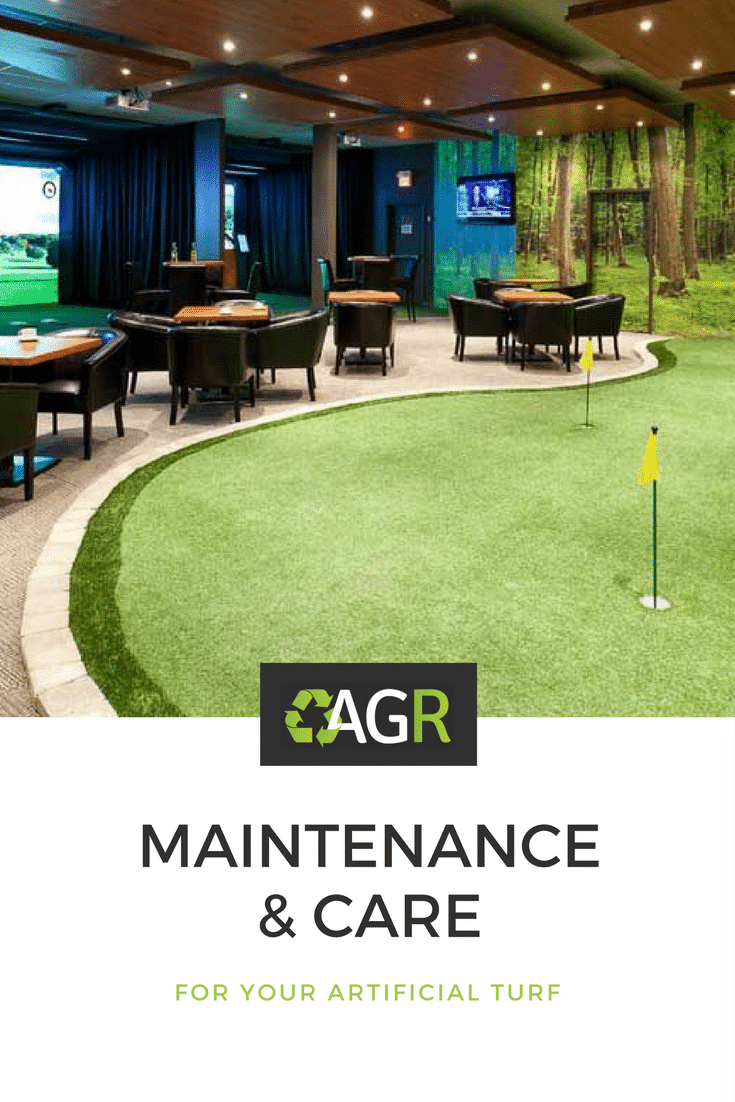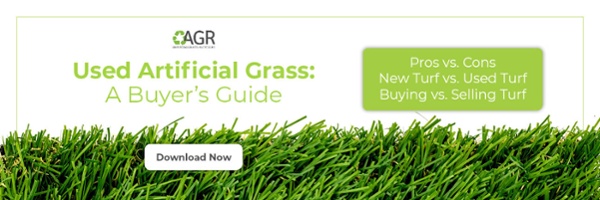Following a handful of artificial turf maintenance tips will ensure your installation lasts for years. When you know about what artificial lawn maintenance must be performed, you can better understand the full scope of your work.
There are so many benefits to landscaping your yard with new or used artificial turf. Synthetic grass is beautiful – it always stays green and lush, no matter the weather. When properly installed, artificial grass is convenient, requires no mowing, weeding, or fertilization.
Maintaining your artificial grass landscaping is easy to do yourself. However, it must be done carefully to bring you years of green and gorgeous enjoyment!
Let's get started with the synthetic turf care tips you need.
1. Keep it Free from Pollutants
Most airborne pollutants, like dust, pollen, smoke, or ashes, can be cleaned easily with simple rinsing.
Rain is great for this purpose since it's convenient, easy, and free.
However, many who invest in artificial turf do so partly because they live in climates that are inhospitable to living grass – dry, desert-like areas with generally low rainfall.
If you live in such an area, spraying your artificial turf with a hose will clean off any dust or loose debris.
2. Clean Stains Promptly
Sometimes artificial turf accumulates dirt, debris, or stains that need more than a simple rinsing.
When this occurs – be it a small stain, like spilled juice, or something more heavily soiled, like food from a cookout or paint from a project – it is of paramount importance to treat the stain as soon as possible, immediately if you can.
Once a stain has dyed or set in, getting it out is much more difficult.
Luckily, if you know how to clean artificial turf, you’ll find removing stains on your artificial grass easy.
If a stain does dry, lift it out with a knife or scraper, then clean it with a mild cleaner. Some excellent options are green cleaners (which contain no abrasive chemicals), a highly diluted ammonia mixture, or diluted household detergent. You can blot the dirtied area with a sponge dampened with your chosen cleaner. Rub at the stain gently until it lifts, then rinse it with cold, clean water for proper turf sanitation.
This should remove most stains. Remember not to use caustic, acidic cleaners, and certainly nothing containing bleach, as this can leech the color from your beautiful artificial lawn.
3. Clear Animal Waste
Artificial turf is great for pet owners.
Pet waste and romping won't destroy, kill, or irreparably alter your artificial lawn. However, it is essential that you keep your artificial lawn free of animal waste.
Rinse away any liquid waste immediately to not stain the turf. Similarly, make sure you also pick up any solid waste as soon as possible. Rinsing the areas with diluted vinegar can clean away any lingering odors.
4. Look out for Fungi and Molds
Does artificial grass get moldy? Yes, even with rigorous maintenance, it is possible to have fungus or mold spring up in your synthetic turf.
Artificial grass mold can be handled easily when you have the right liquid solution. This is why learning how to remove mold on synthetic turf is essential.
Mold, mildew, and fungus are powdery growths common outdoors, especially in the warm spring and summer months. They are found in every type of climate and location as long as they have enough moisture to grow. If any pet waste has escaped your notice, especially, you might run the risk of having unwanted spores pop up.
In the event that this happens, you can clean the area with a harmless fungicide like hydrogen peroxide. The hydrogen peroxide will remove any mold, kill the remaining invisible spores, and take care of any musty odors.
5. Brush Your Turf – Especially High-Traffic Areas
When installing artificial turf, you should also invest in a brush or broom with synthetic bristles. This is part of the turf grooming strategy to keep your artificial turf looking great.
Use this brush to cross-brush areas that receive a lot of foot traffic. Artificial turf can be trampled down with repeated use, and cross-brushing will help it stand straight again and prevent fading or wearing down from overuse. Turf brushing can maintain the integrity of the individual blades of artificial grass.
The matting that occurs from overuse can cause the blades to begin to break down and look different over time. Cross-brushing, however, can reduce this damage and prolong the life and beauty of your artificial lawn. If things get too bad, then infill replacement may also be necessary.
6. Don't Misuse Your Turf
You shouldn't smoke or leave cigarettes on your artificial lawn. If you do this, then you could be looking at artificial turf repair sooner than you would have imagined. The synthetic lawn restoration projects that you might have to put into your turf can be labor-intensive and expensive. Instead, it is best to avoid mistreating your artificial turf simply.
The smoke residue may dull the color, leave a film, and trap odors in your artificial lawn. Cigarette butts that are not fully put out may also damage your artificial lawn. Also, ensure any lawn furniture has pads on the bottom of its legs. You don't want sharp edges to damage your investment.
You should also cap off or disconnect sprinklers or hoses, as they can damage artificial turf by leaving mineral deposits.
7. Stay in Contact with Your Retailer or Installer
Perhaps the most important thing you can do for your artificial grass is to stay in contact with your fake grass retailer.
If you have a question, concern, stain, or any malfunction, you will know that there is professional help just a phone call away. Any stain or problem you can't take care of by doing it yourself, you know that a professional retailer or installer will be able to remove, repair, or advise you on your synthetic grass. Maintaining your lawn and your relationship with your lawn's installer is truly in your best interest.
Installing artificial turf is an excellent investment. Fake grass is beautiful, easy to maintain, and resilient. That doesn't, however, mean that you can completely neglect it. You can clean fake grass easily and inexpensively, but it must be done consistently. Take care of messes early, and you can potentially avoid paying for artificial turf rejuvenation or replacement for decades when you buy new artificial grass. While used artificial grass has a slightly shorter lifespan, it costs 50%-75% less than new artificial turf.
To find out whether new or used artificial grass is right for your project, check out our eBook “Used Artificial Grass: A Buyer’s Guide.”

Sep 21, 2017 2:00:12 AM



